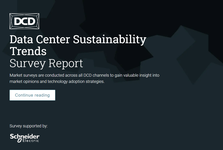This article was co-written by Jeremy Deutsch, Equinix APAC President
There are many sound reasons for organizations to migrate their IT and infrastructure needs into the cloud. An increasingly important one lies in helping to meet a green agenda and deliver on environmental, social and governance (ESG) goals.
Putting applications into the cloud is a great carbon reducer. Research conducted by consulting firm Accenture has found that shifting workloads from on-premise servers to the public cloud can cut an organization’s energy usage by 65 percent and reduce carbon emissions by more than 84 percent.
Greening the data center
The toll on the environment has become a concern for both data center operators and governments, and action is being taken to address the issue with data center companies charting the course..
The future of data centers can be clean and efficient. The facilities of tomorrow will need to be designed on an innovative basis, reliant on low carbon energy, high efficiency cooling, circular economy principles that prioritize the reuse of waste heat, and the recycling of hardware.
With pioneering data center operators setting the pace with the building of new greener facilities, the ecosystem must now follow. They will need to take note of three classes of emission: Scope 1 covering greenhouse gases that a company emits directly; Scope 2 emissions are indirect, for example energy bought to heat and cool buildings; Scope 3, the trickiest area, means assuming responsibility for an entire value chain including suppliers and partners. This has been one of the main areas of focus for the more progressive operators.
Cloud computing optimized for sustainability
As well as constructing new facilities with the environment in mind, there’s the parallel challenge of making sure that the compute power inside is as green as possible. This demands cloud computing companies to put a focus on providing the best possible services to enterprise customers for the lowest environmental cost. One example is Alibaba Cloud’s “soaking servers” which have a low PUE.
It is accepted that deploying traditional CPUs at the core wastes a lot of processing power, which is inefficient. Helping to address this, are Cloud Infrastructure Processing Units (CIPUs). Designed with performance improvements in networking, storage, security and computing power in mind, they work by offloading virtualization functions from servers to dedicated hardware. This new cloud infrastructure system is designed to power cloud-native data centers in the greenest way possible.
A new dawn for IaaS
Developments in IaaS frameworks are playing well with the environmental aspirations of digitally focussed enterprises. IaaS is a great way for businesses to access the infrastructure they need on-demand from the cloud, saving the need to purchase and maintain complex hardware with all of its attendant cost implications and carbon overheads.
The latest IaaS developments are playing a key part here, working towards the greening of compute power. IaaS has really taken off as the cloud-native model becomes the primary architecture for modern workloads and the best way of achieving maximum compute power for the least energy. Additional research from Gartner identified IaaS as having grown 41.4 percent in 2021, in response to a hunger for much greater efficiency in the deployment of infrastructure.
Innovations like these from data center and cloud computing companies are central to the greening of technology infrastructure to help organizations everywhere to progress digitalization plans and reduce costs. It is important to remember though that meeting ESG goals is about more than just deploying the right technology. Sustainability efforts also mean developing digital supply chains that answer environmental needs. Dealing with the tricky issue of Scope 3 emissions, for example, is all about assuming responsibility for an entire value chain including suppliers and partners.
Anybody investing in IaaS efficiencies is contributing to global sustainability efforts and also helping digital supply chains to meet their green goals. Collaboration from end to end of these chains is essential. The cloud sector of the future will need to develop into an ecosystem of sustainable partners working together towards business and environmental success.





